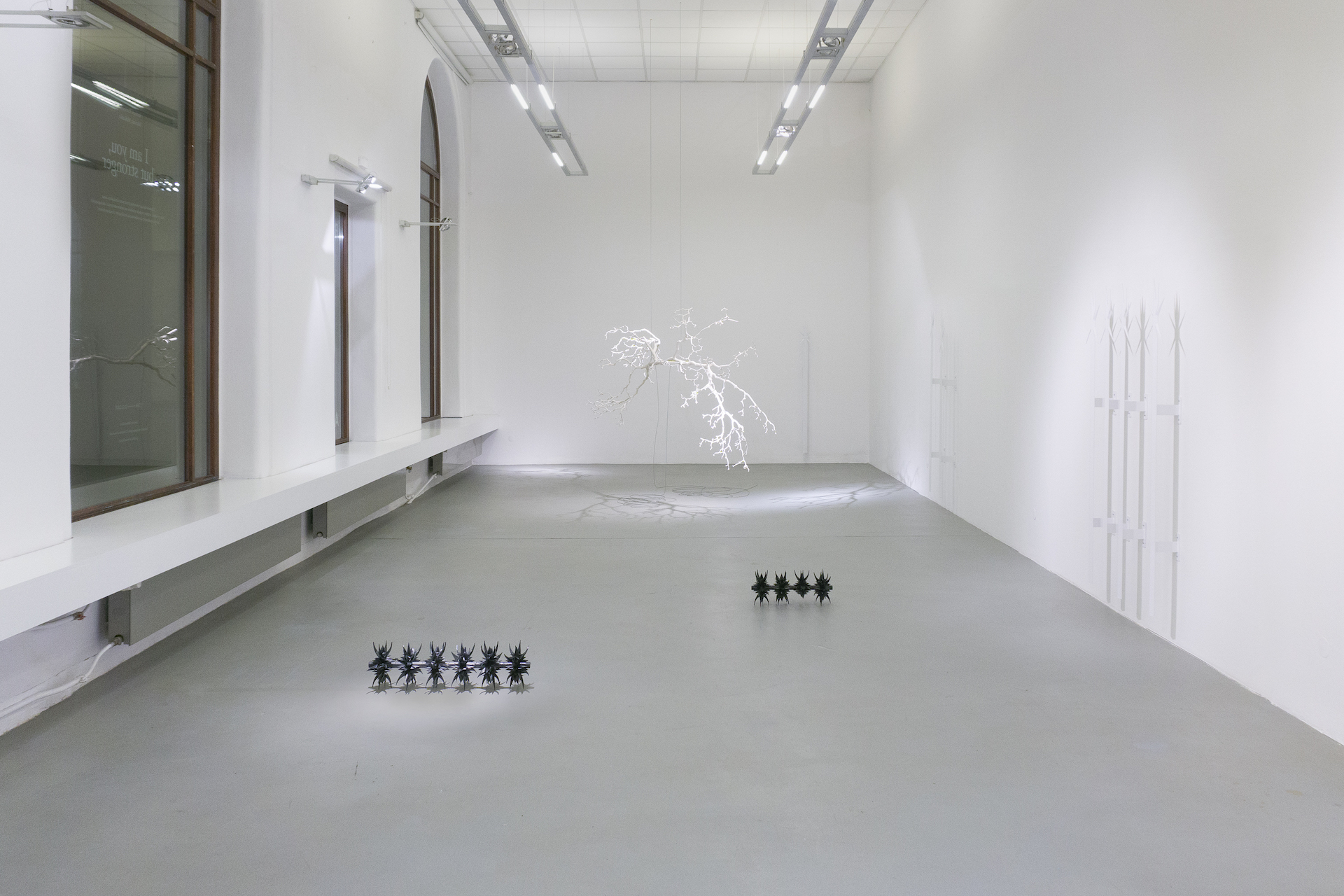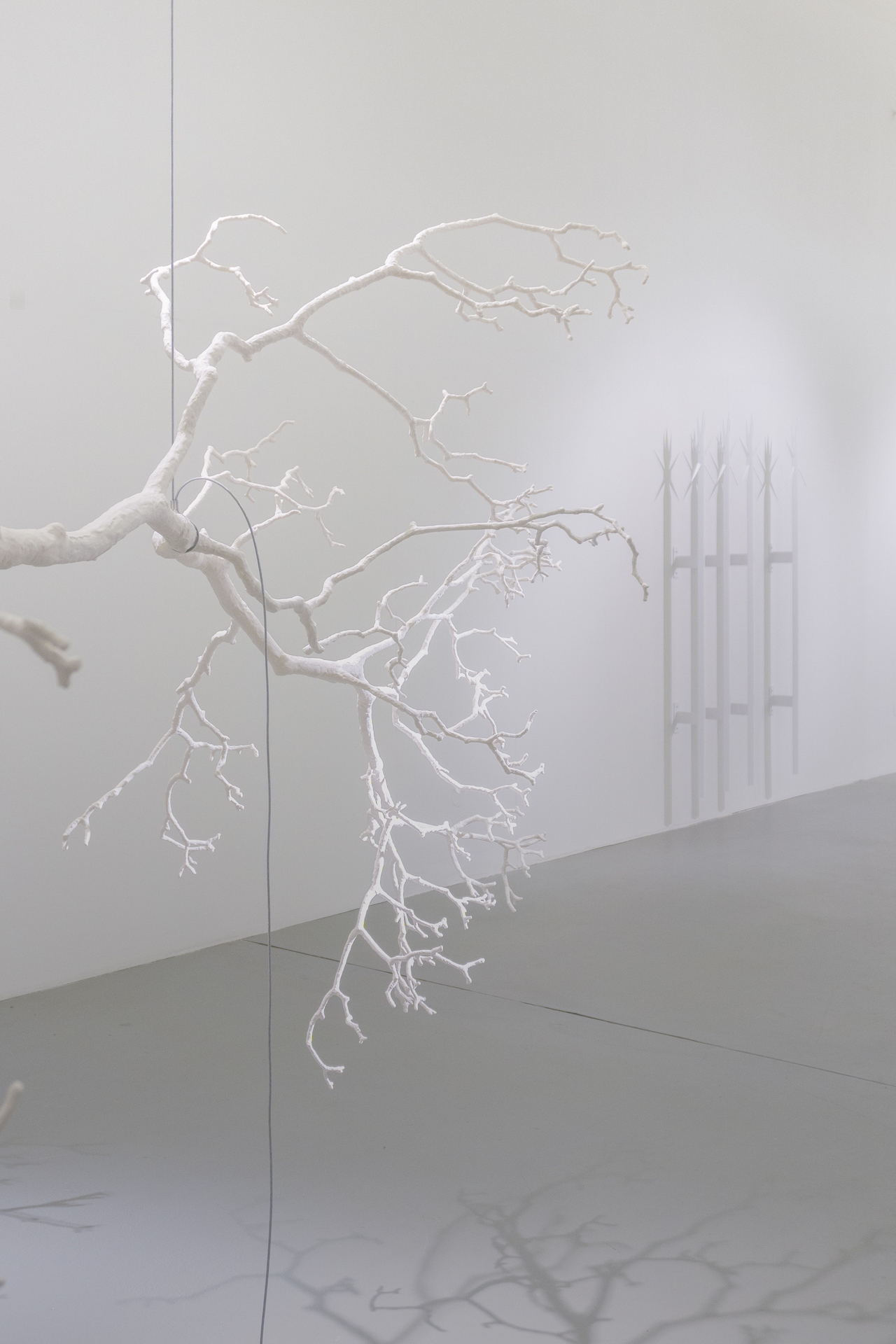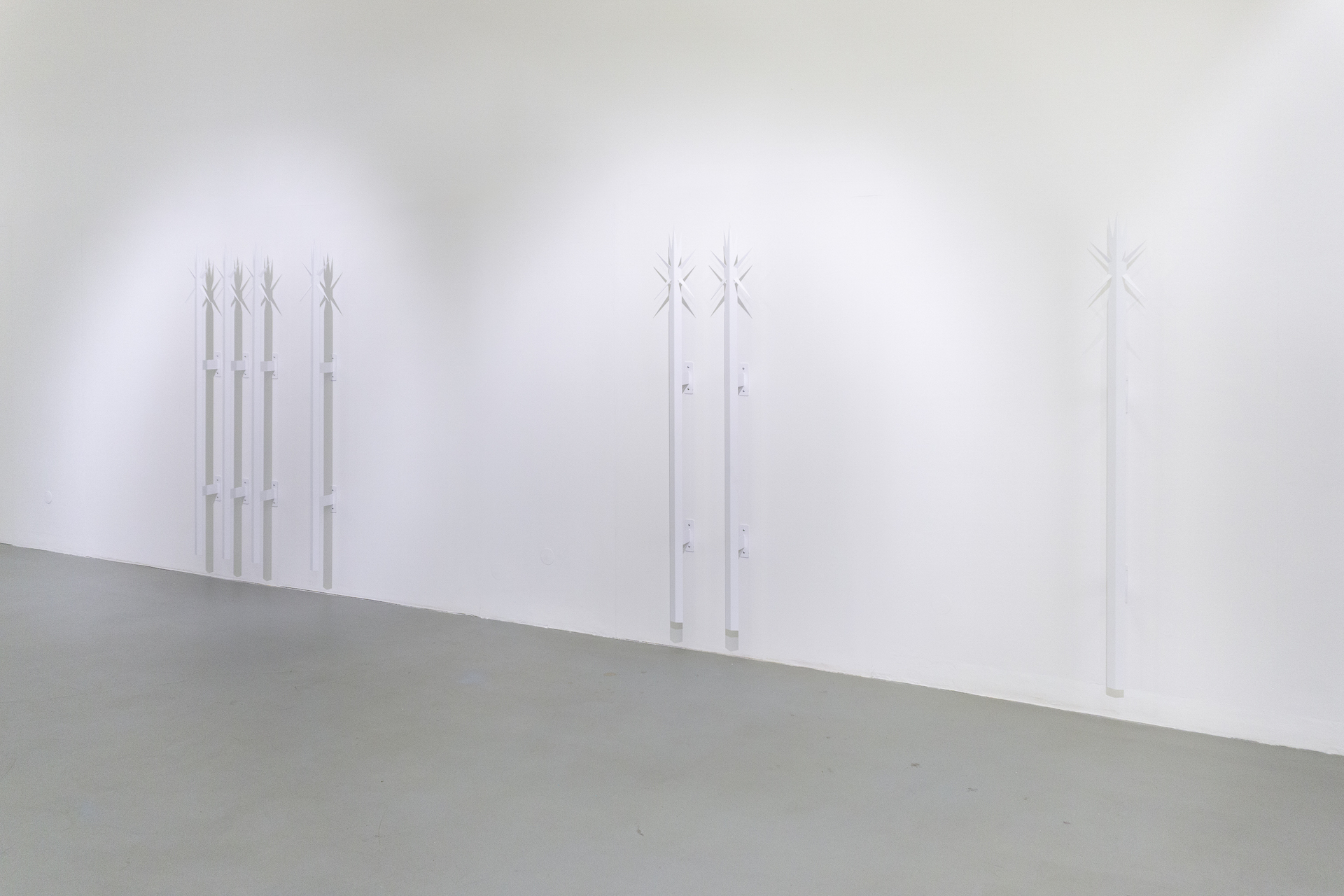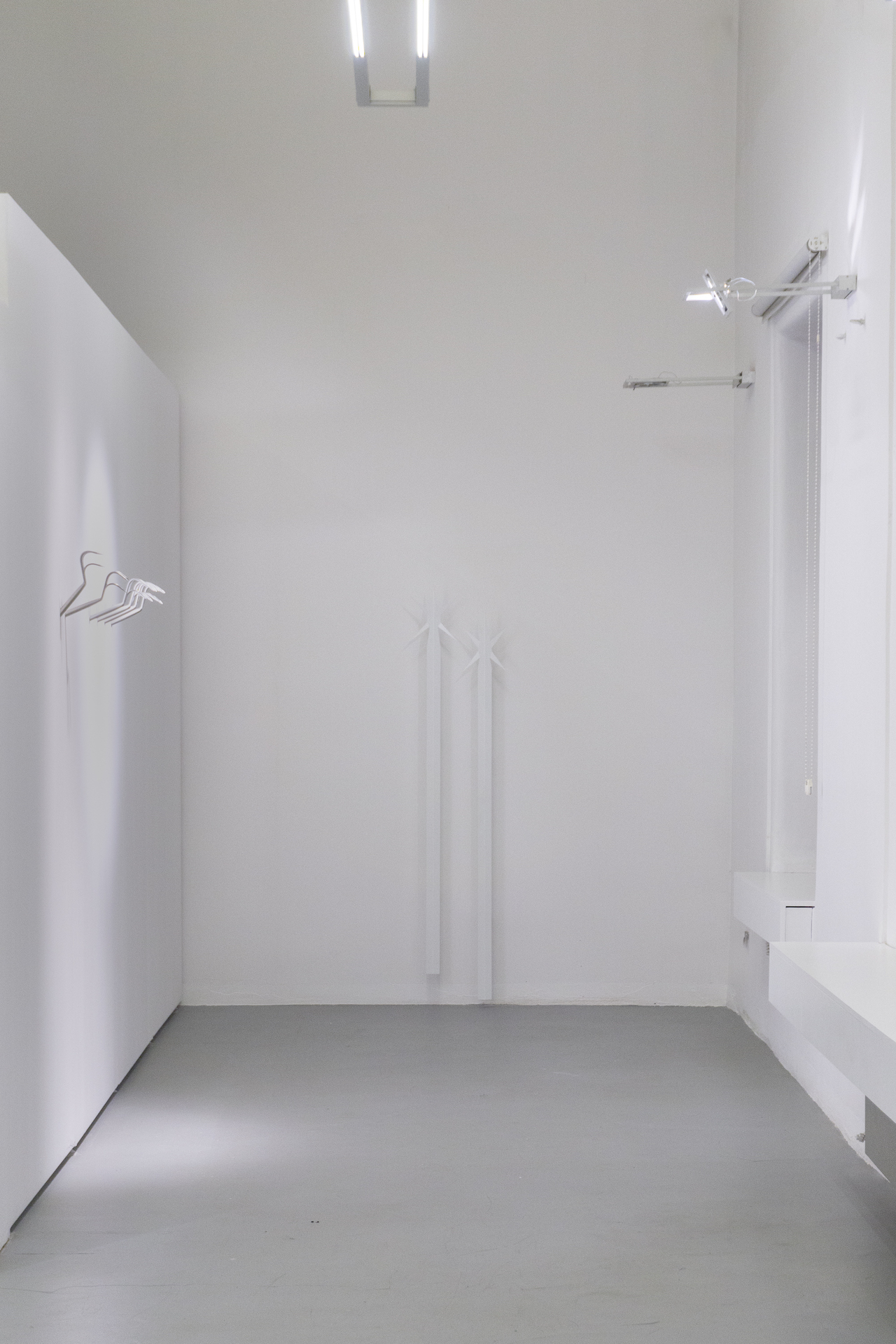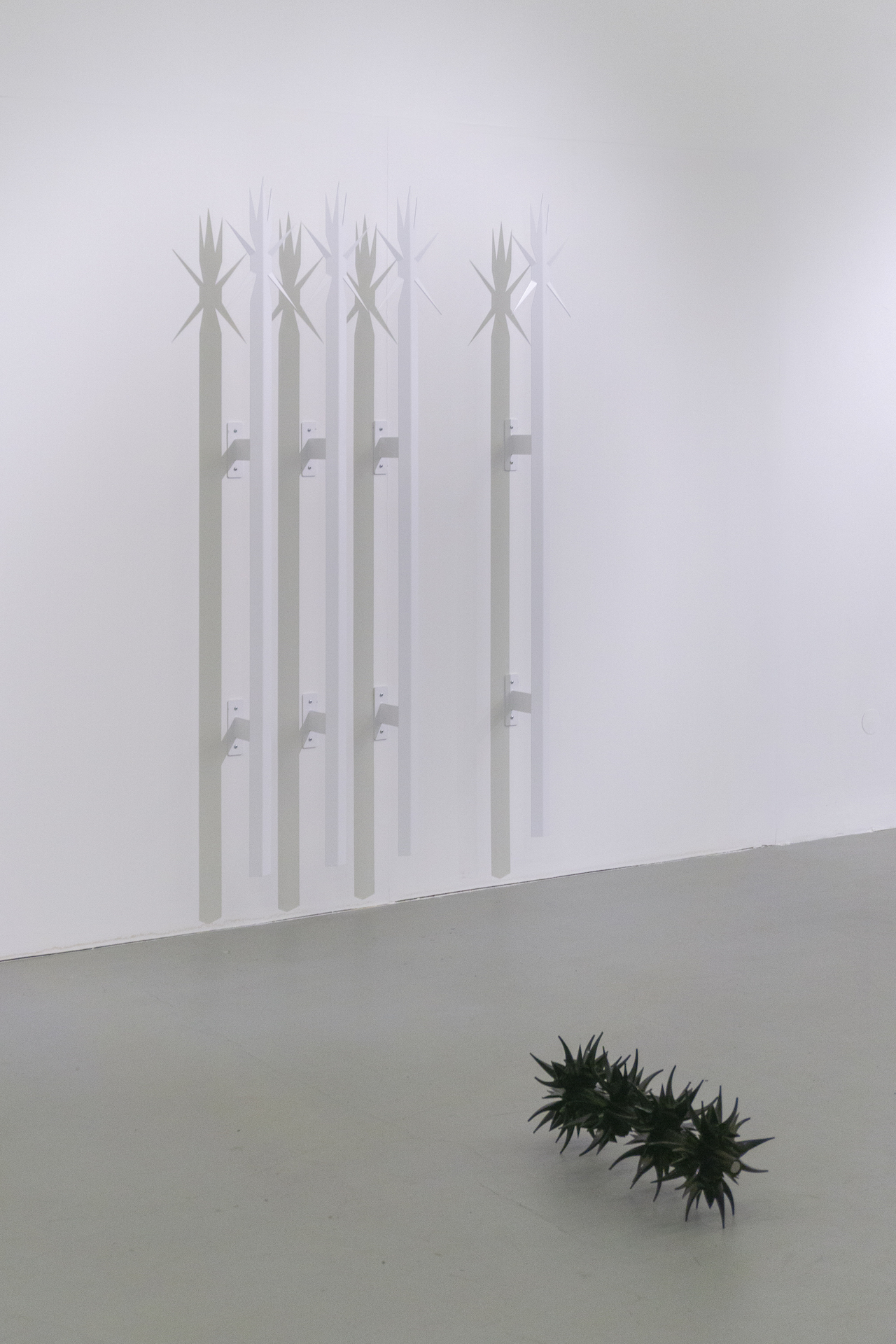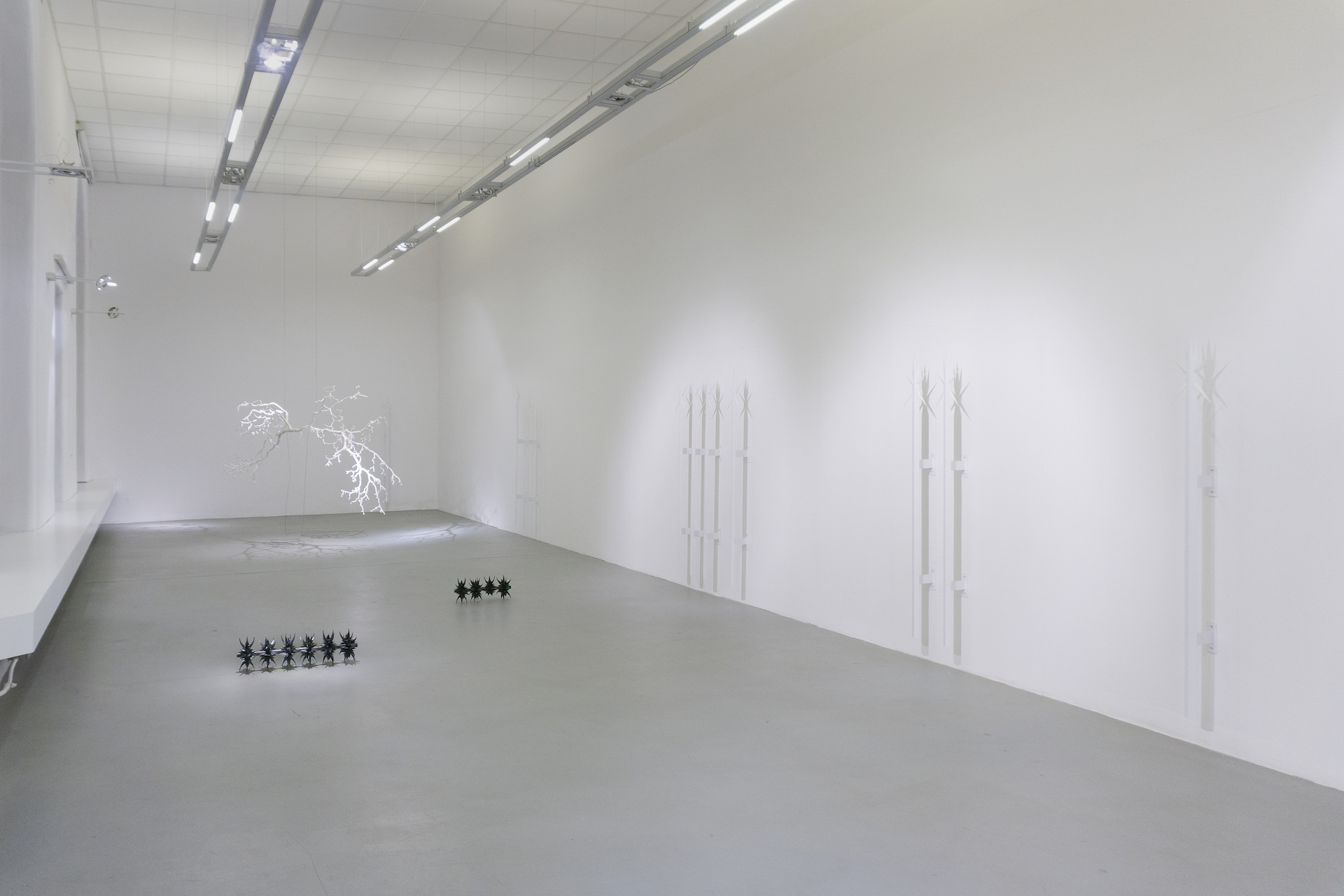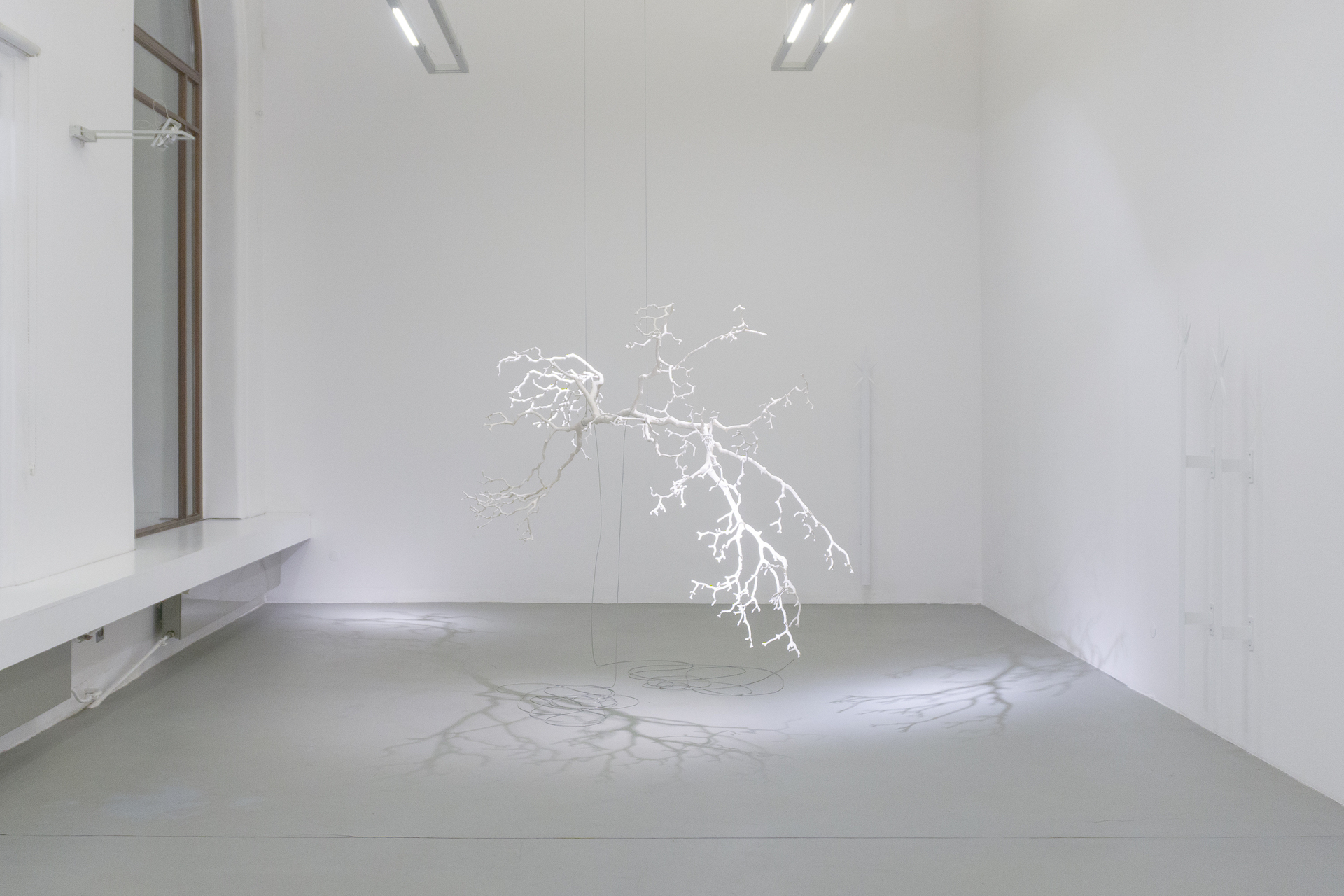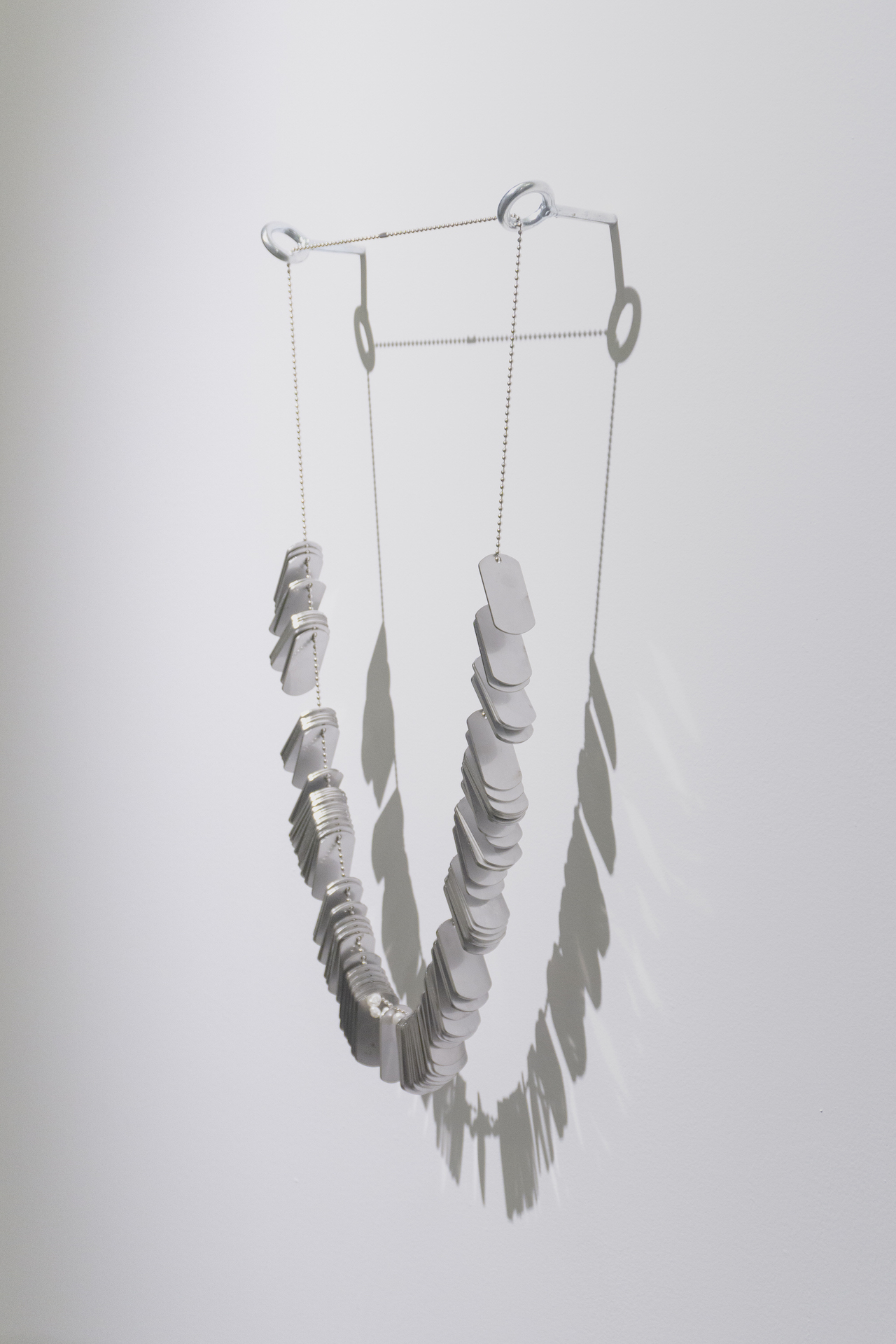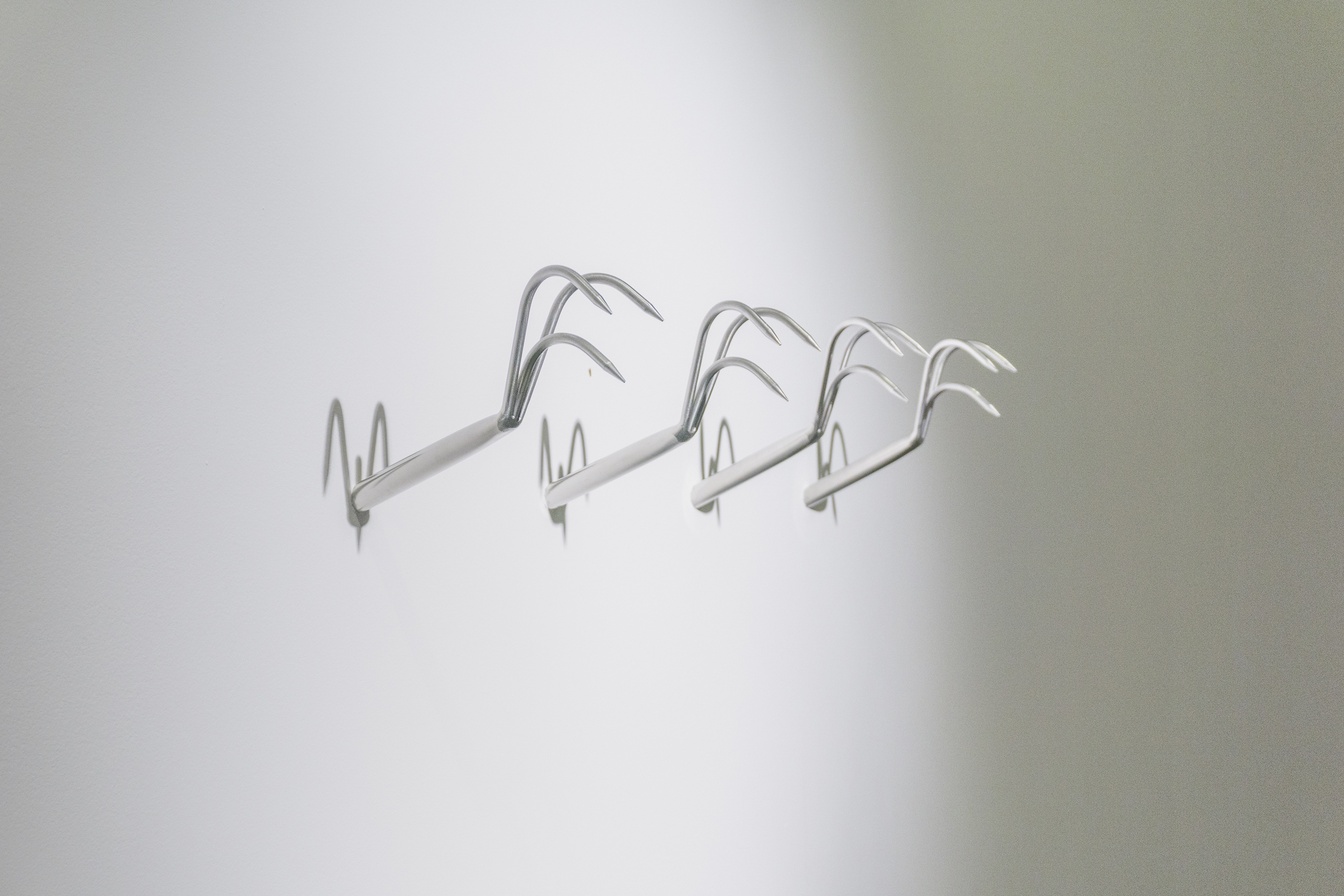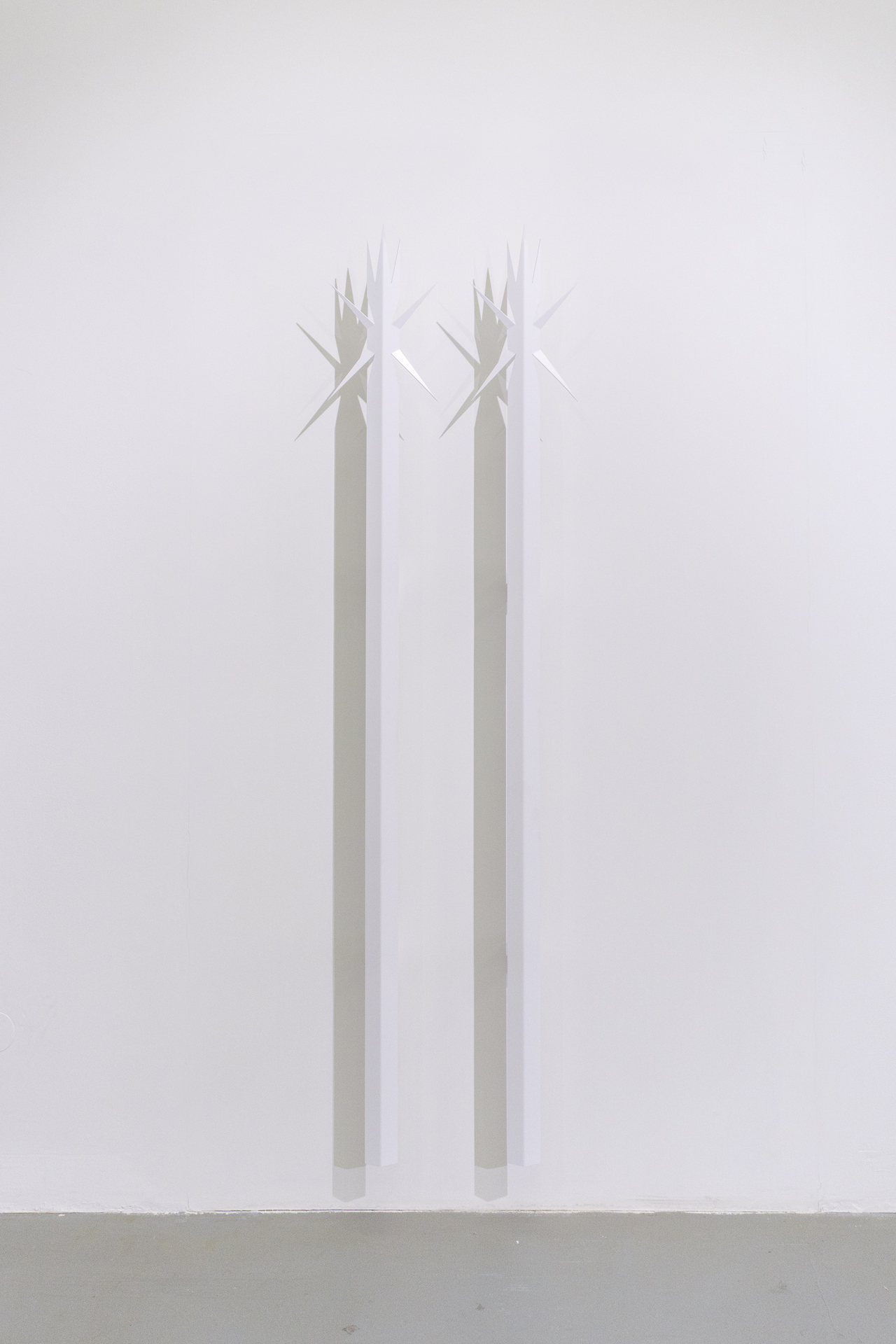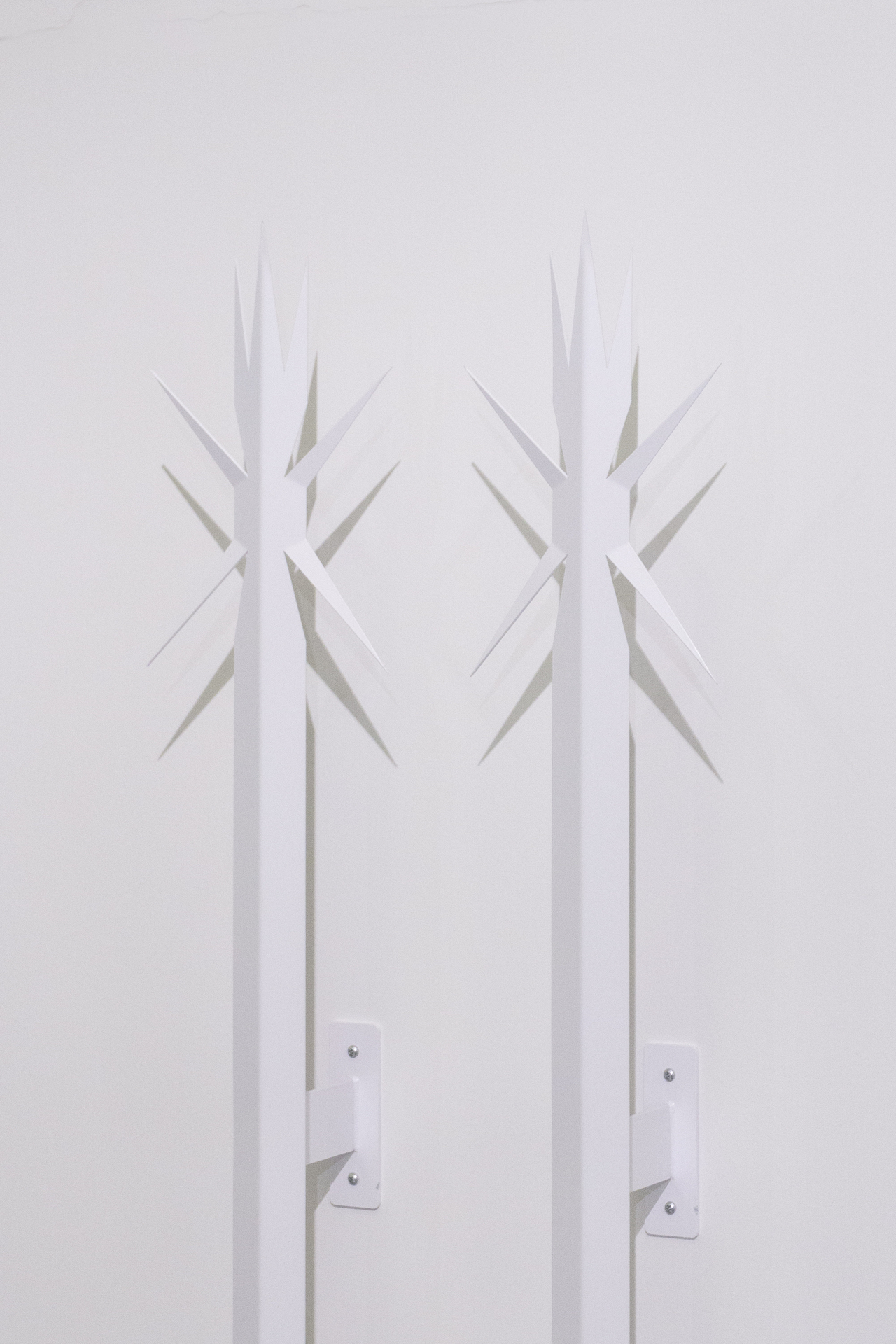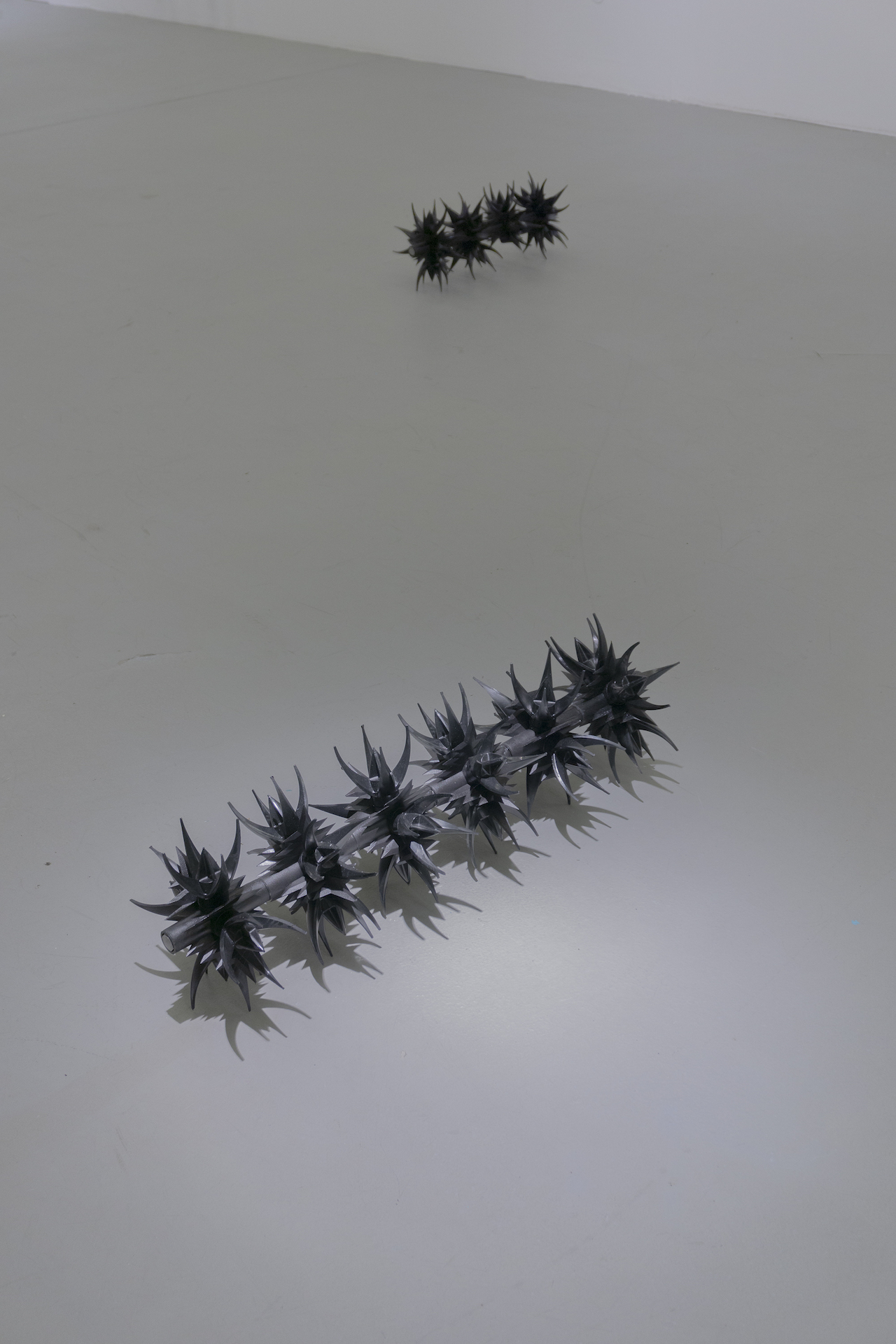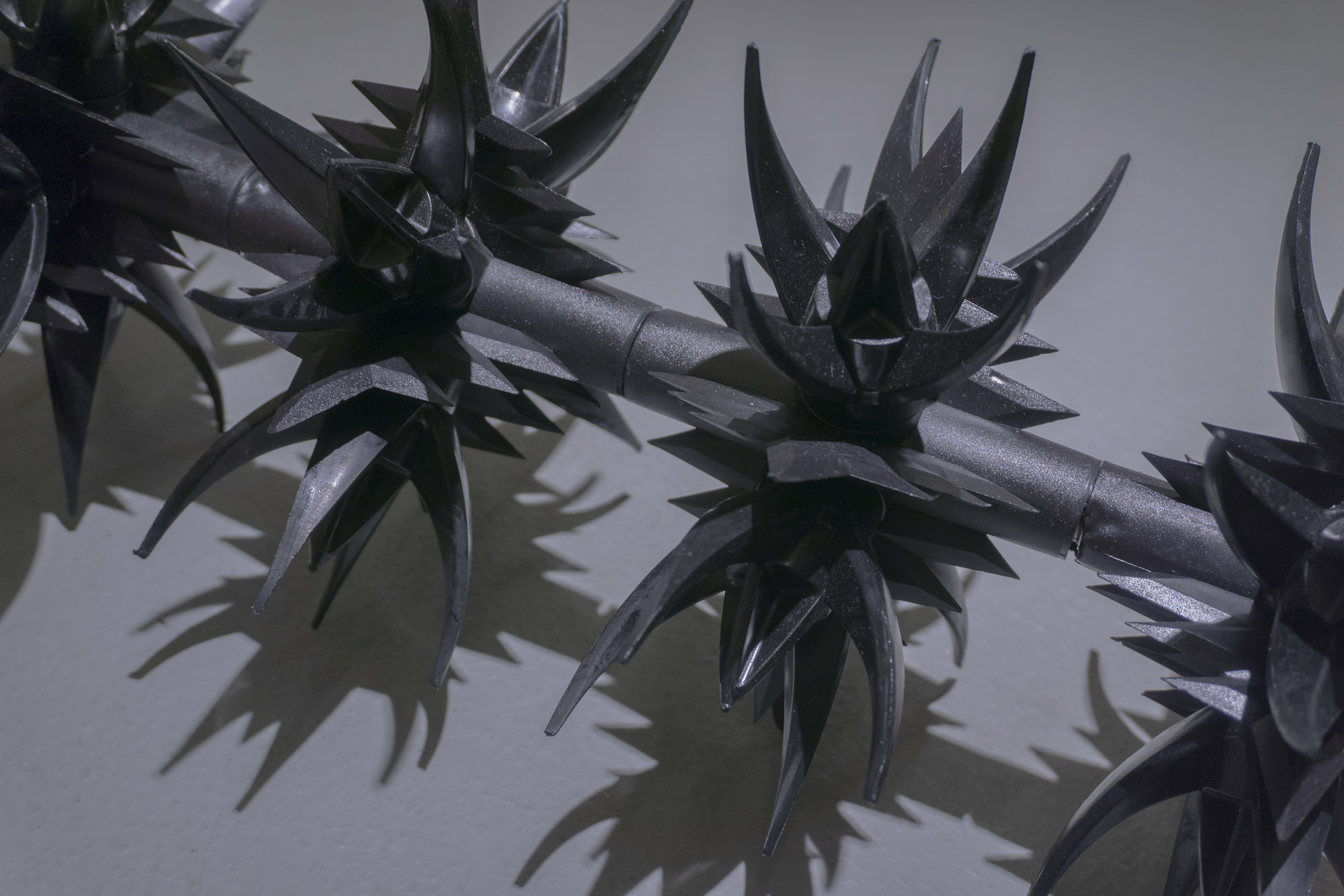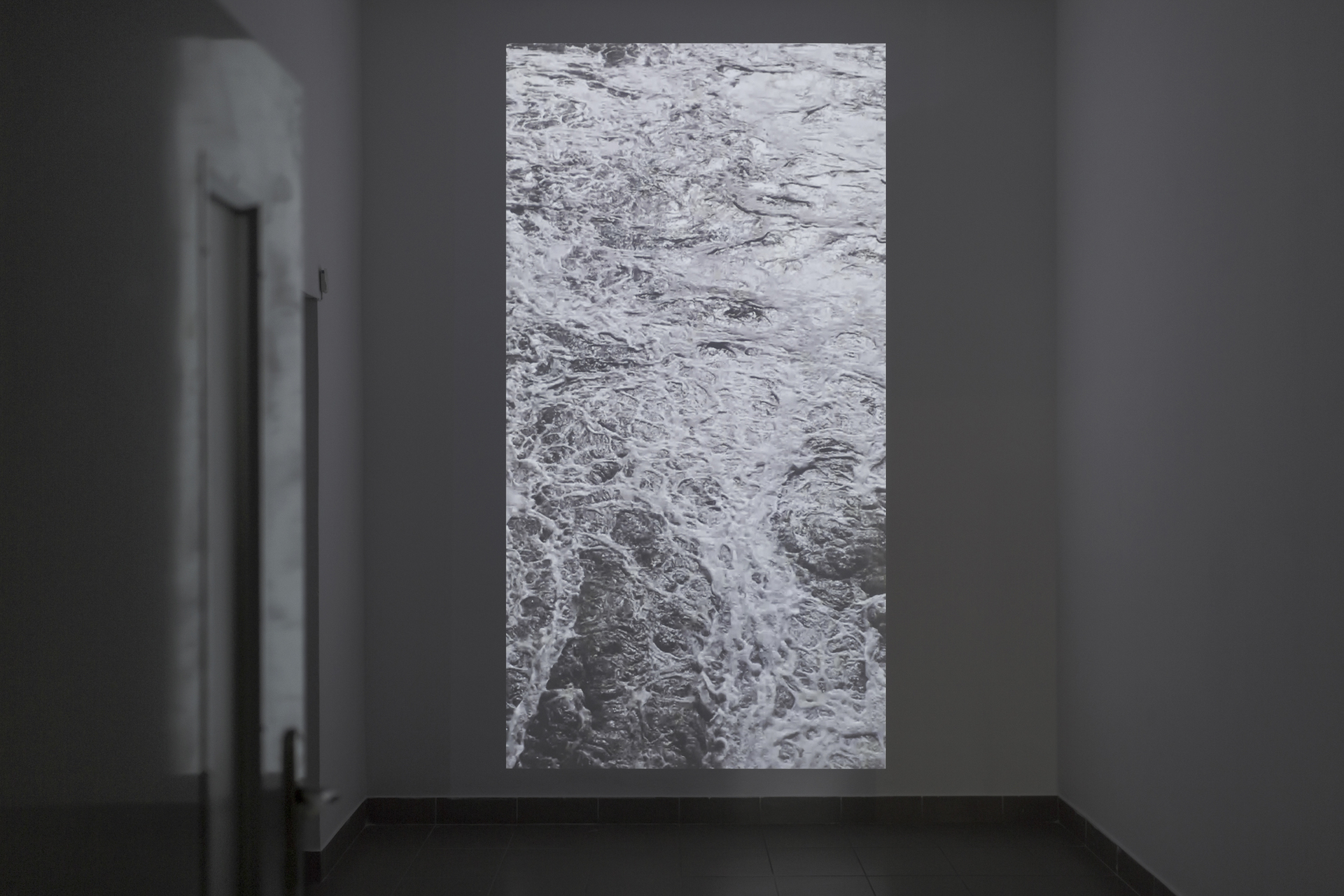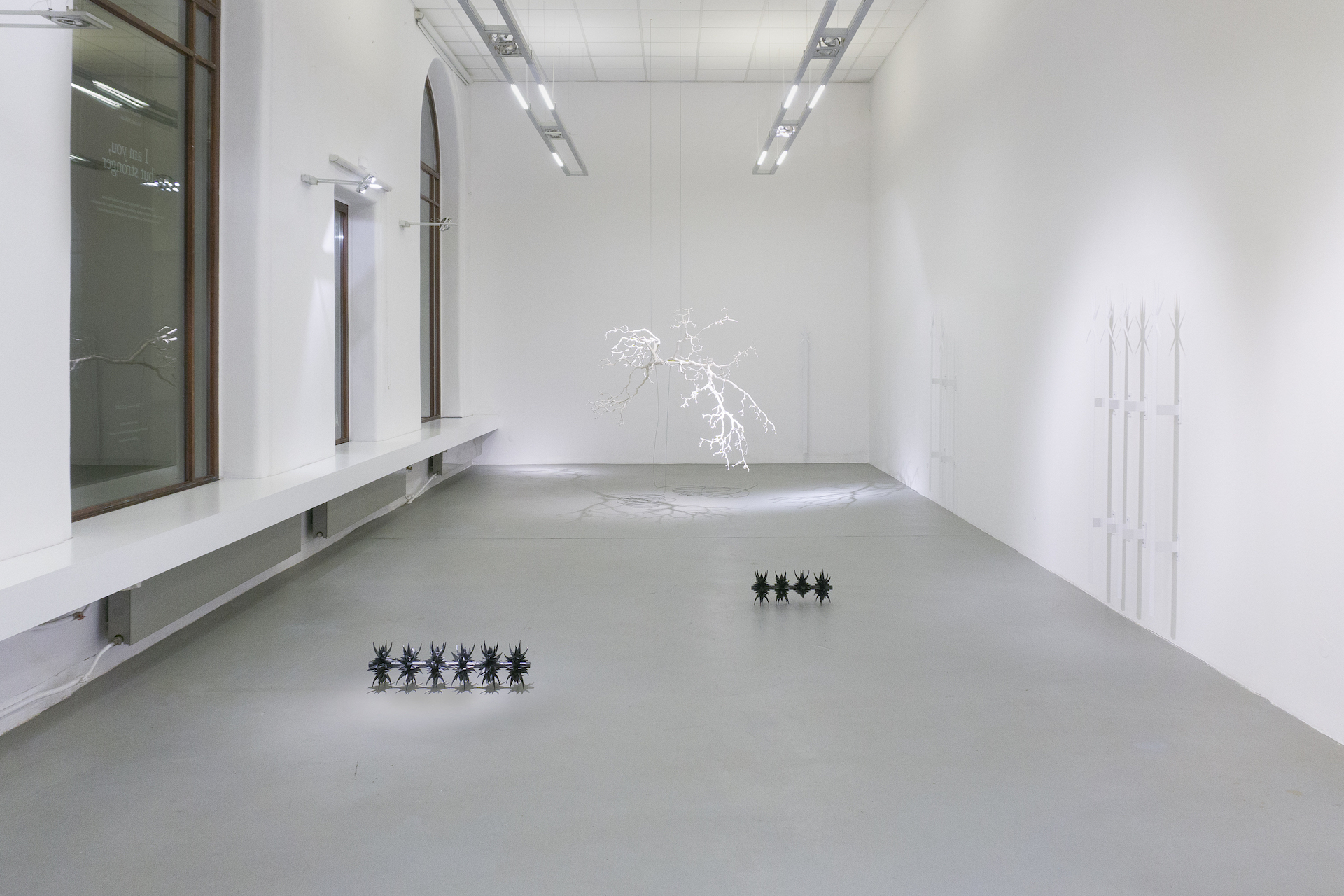Artists: Mariusz Maślanka, Barbara Żłobińska
Title: I am you, but stronger
Venue: Gallery SIC BWA, Wrocław
Curator: Hubert Kielan
Photo: Mariusz Maślanka, Alicja Kielan. All images copyright and courtesy of the artists and Gallery SIC BWA Wrocław
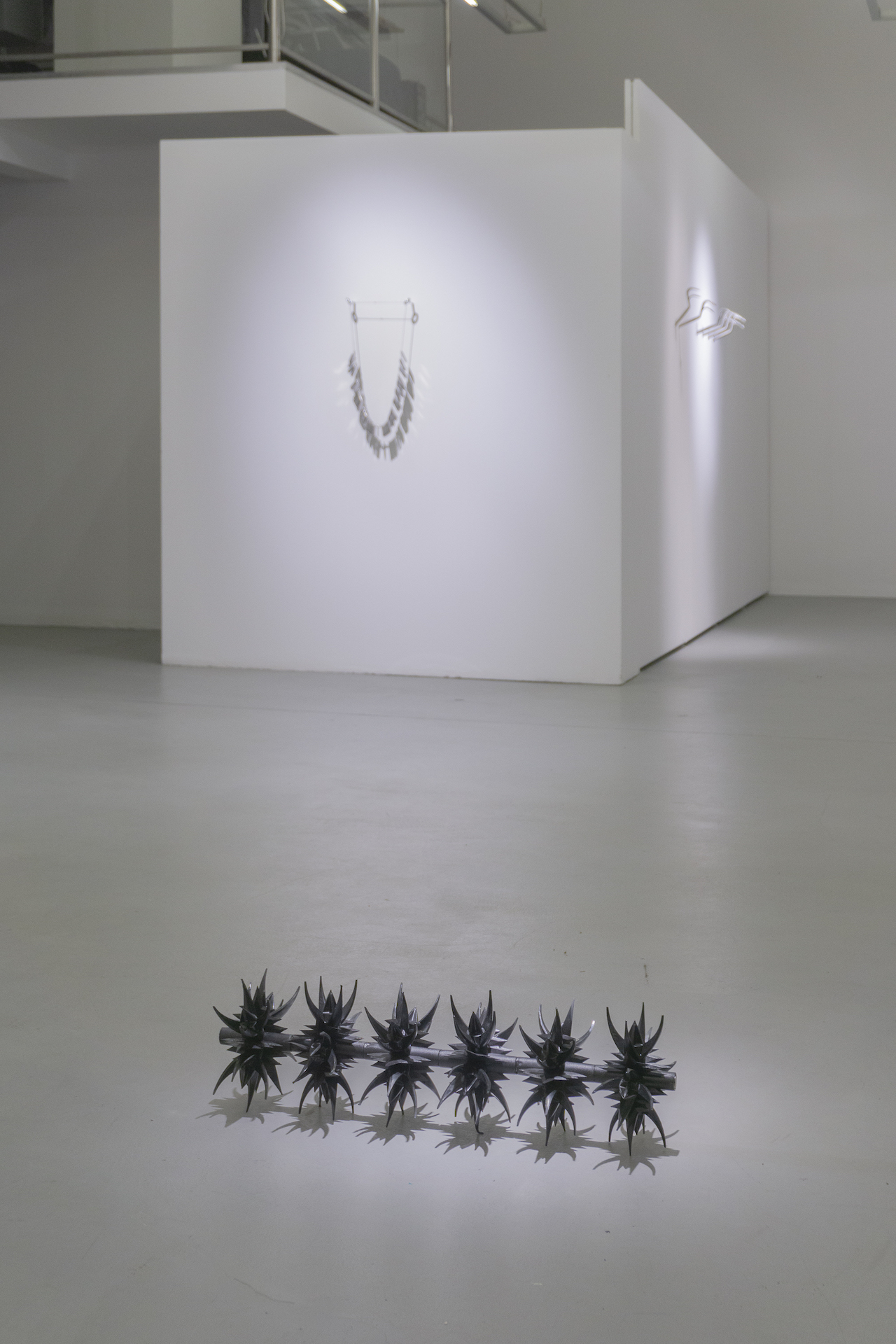
Physarum polycephalum is neither an animal, nor a plant, nor a fungus. This single-celled organism appeared on Earth over a billion years ago. It is one of the most primitive and simple inhabitants of our planet. As simple as it is, it has extraordinary abilities. It has no eyes, no mouth, no stomach, no legs. Nevertheless, it sees, reacts to smell, digests and
moves. It has neither a nervous system nor a brain, yet it can solve complex problems, remember and even develop strategies.
What is most amazing, however, is the fact that polycephalum is a single-celled species that doubles in size every day, creating patches that are several meters in diameter. These spots take shapes and colors corresponding to those in the immediate vicinity. Its structure resembles nervous and root systems. It multiplies and mutates into new forms and this
unique skill allows it to resemble gravel, stones, or even plants and animals.
This organism is studied by scientists all over the world: biologists, physicists, mathematicians and even economists. The latter point to the similarity of its features, especially its unlimited growth and protective adaptation to the mechanisms of the global economy – mechanisms that are responsible for the increasing pace of civilization transformation in recent decades. The findings of the researchers open up an unexplored world: a reality in which the relationship of socio-economic and ecological systems is the more difficult to recognize, the stronger and more complex.
The I am you but stronger exhibition is the result of the artists’ insightful and careful reflections on the problem of genre and economic privilege and considerations in the context of the concept of capitalism as a way of organizing a broadly understood nature; reflections undertaken by artists born during one of the most dynamic socio-economic transformations in Central Europe. Żłobińska and Maślanka have adopted an elegant perception: the physical world is only a projection of the civilization system, where science, nature and spirituality, economy, ecology and ethics, evolution, adaptation and mutation are connected vessels. By means of this approach, we can not only see the reality, but also understand where its image comes from.
At the SIC! BWA Wrocław gallery, the artists present a series of objects of everyday use and installations, the forms of which could prove the existence of a larger generating force – the operation of independent, duplicated and mutating patterns. These treatments affect not only the morphology of the objects, but also change and sometimes even negate their previous purpose. Fence rails, whose sharp heads prevent an intruder from entering, take the form of snowflakes. An unusual, unknown creature whose structure corresponds to a non-existent physiological activity. Gardening rakes that resemble the claws of a hunting hawk. Nameless military dog tags that absorb the matter of Swarovski crystals, while turning into useless and too heavy jewelry. What is the original mould here? What thing has copied the features after another first? Any attempt to identify the primary organism turns out to be pointless.
The shape of the world shown in the exhibition coincides with the one presenting a global, socially unequal network of the flow of raw materials, processed goods and capital. It also coincides with the form of Physarium polycephalum, which, being one of the few cells in nature “visible” to the naked eye, becomes completely imperceptible due to mimicry.
